Abstract
Five-hundred fifty-five (555) isolates of Escherichia coli were obtained from fecal specimens of a representative number of animals from five farms in the United States. Antibiotic exposure of the selected herds was determined by an epidemiological survey of these farms. The incidence of multiple resistance in the E. coli isolates was higher in herds exposed to continuous feeding of antimicrobial agents (84.8%) than in a herd not receiving antimicrobials (15.7%). The most common resistance configuration observed was the triple pattern of dihydrostreptomycin (DS), sulfonamide (SU), and tetracycline (TE). The second most frequent pattern consisted of four resistances: ampicillin (AM), DS, SU, and TE. The frequency of transfer factors was much higher in multiply resistant organisms from the herds exposed to antimicrobial medicaments. The E. coli isolates were relatively efficient in fostering and transferring heterologous resistance factors. AM resistance factors occurred more frequently in herds which were exposed to feed levels of penicillin (27.9%) than in those that were not (6.4%).
Full text
PDF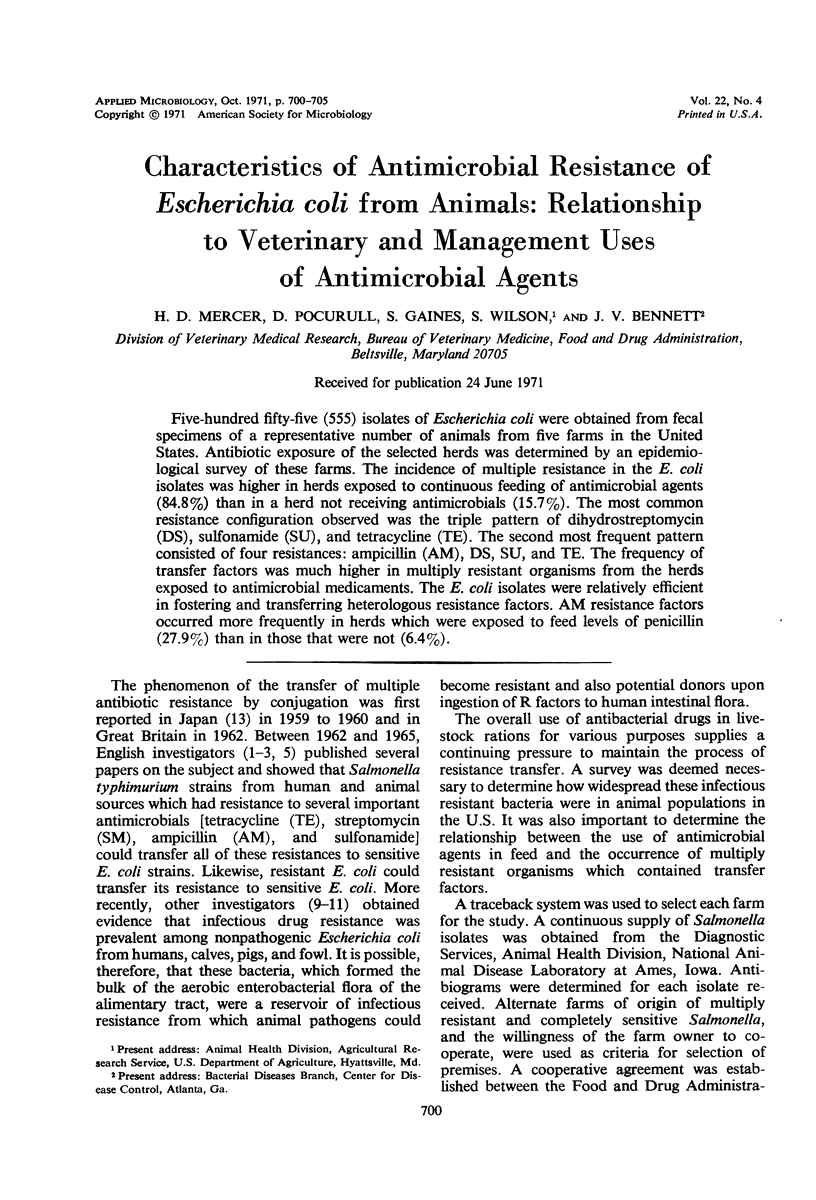
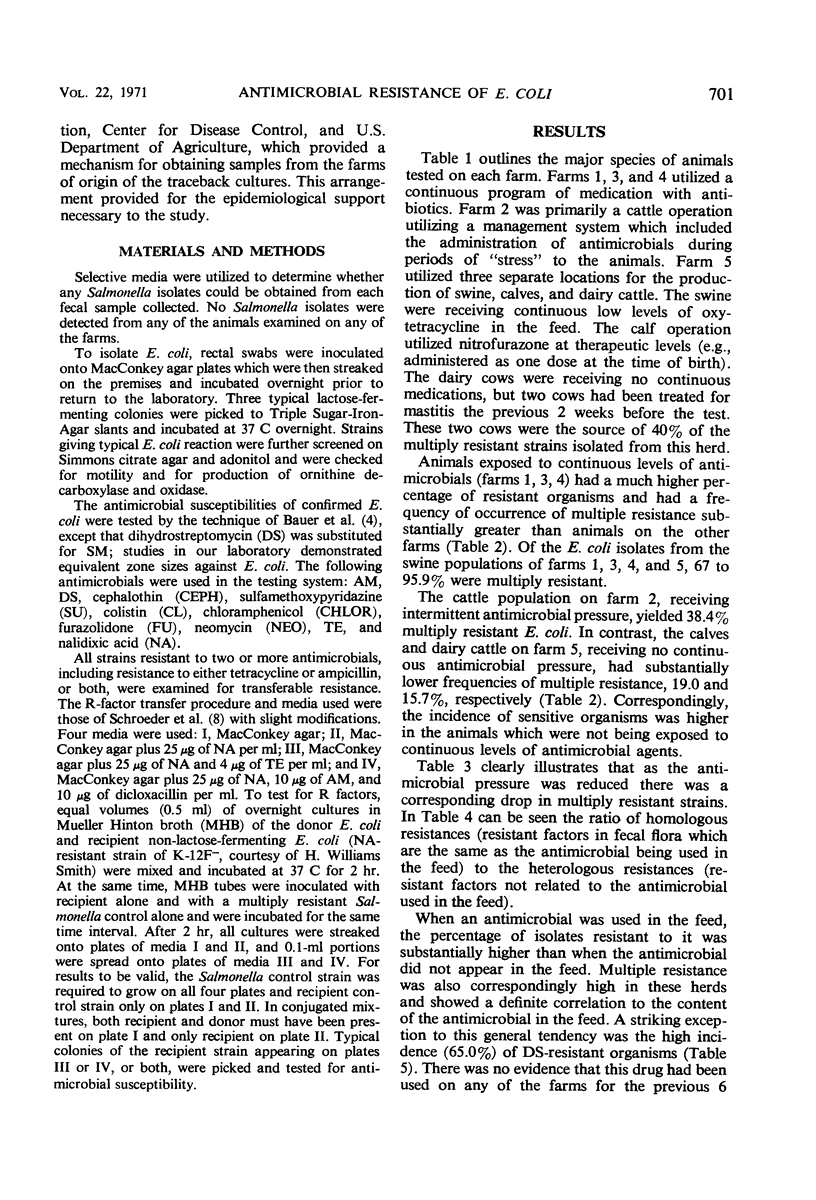
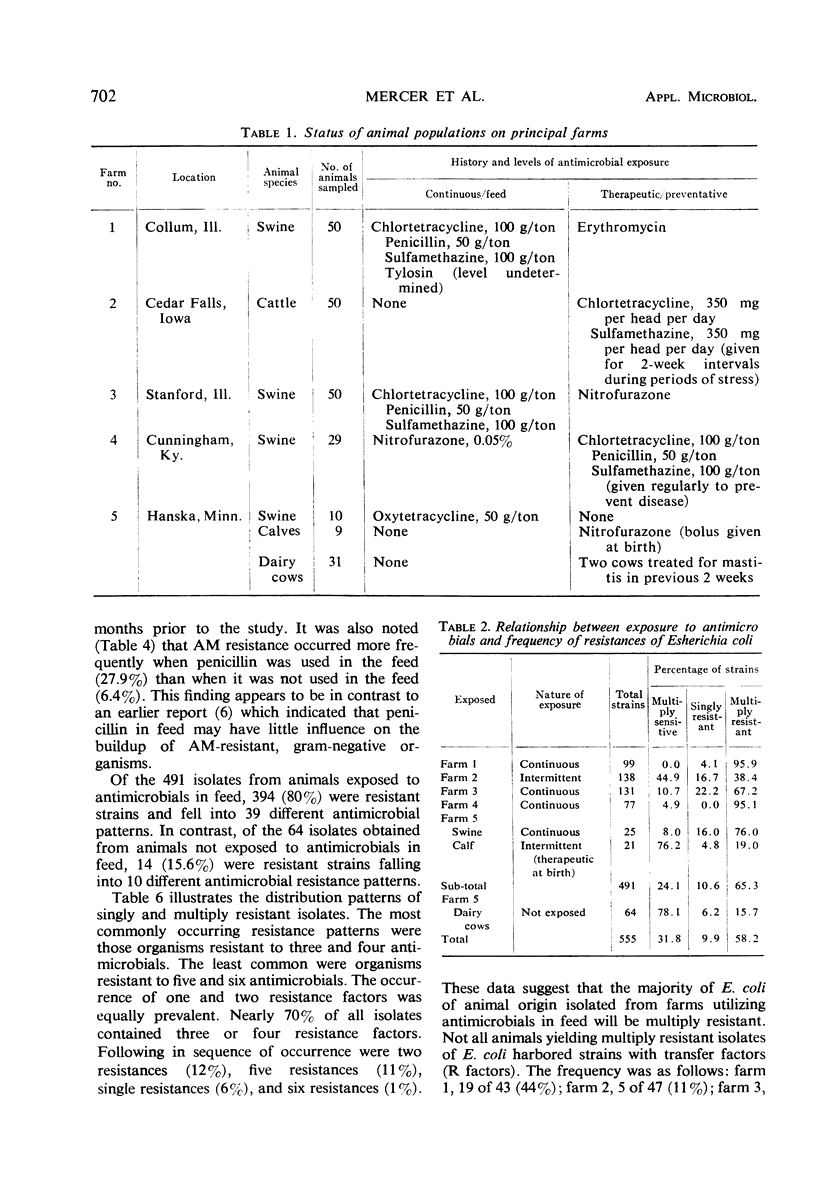
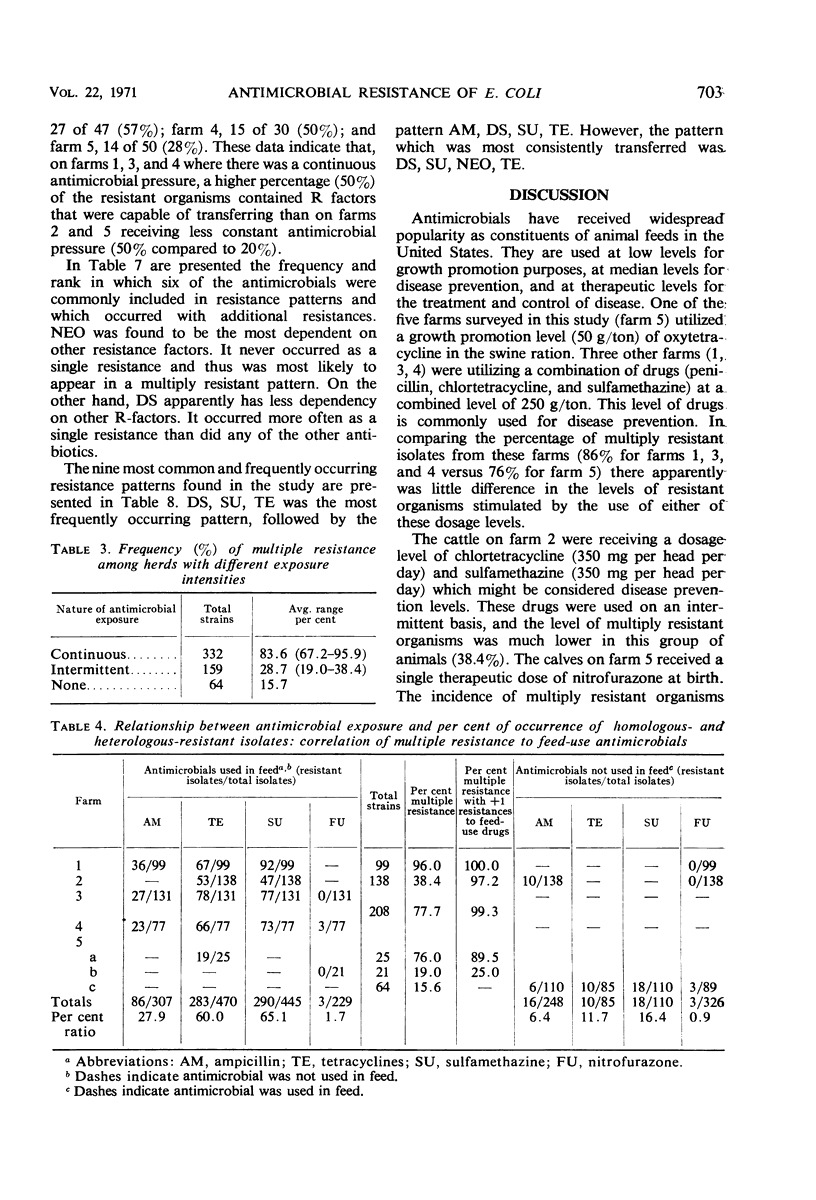
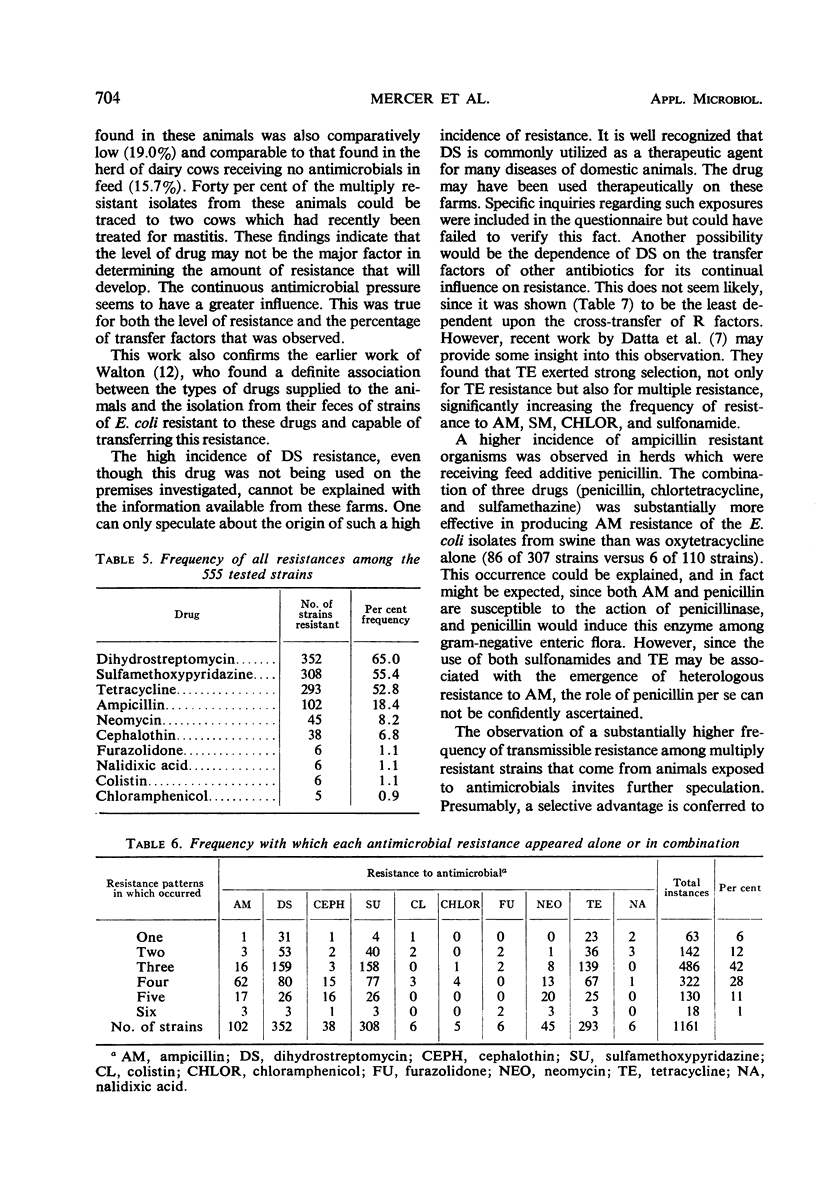
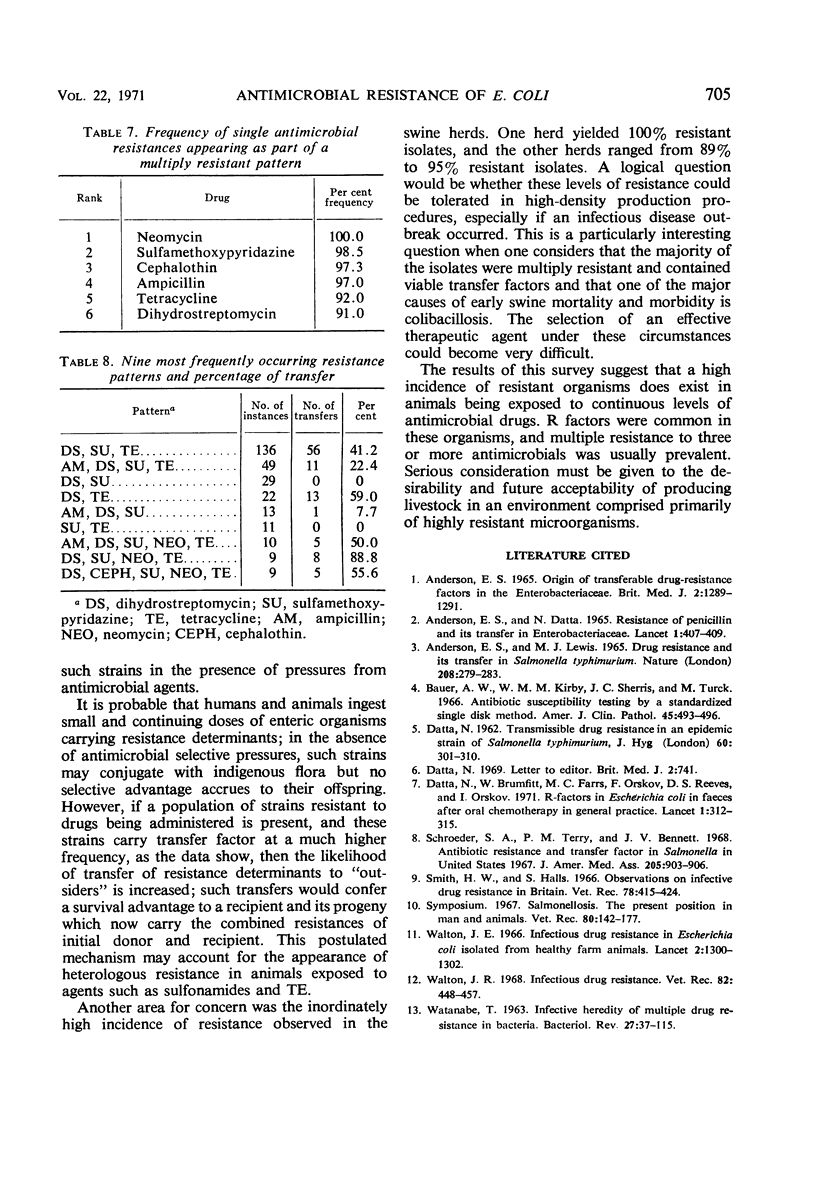
Selected References
These references are in PubMed. This may not be the complete list of references from this article.
- ANDERSON E. S., DATTA N. RESISTANCE TO PENICILLINS AND ITS TRANSFER IN ENTEROBACTERIACEAE. Lancet. 1965 Feb 20;1(7382):407–409. doi: 10.1016/s0140-6736(65)90004-8. [DOI] [PubMed] [Google Scholar]
- Anderson E. S. Origin of transferable drug-resistance factors in the enterobacteriaceae. Br Med J. 1965 Nov 27;2(5473):1289–1291. doi: 10.1136/bmj.2.5473.1289. [DOI] [PMC free article] [PubMed] [Google Scholar]
- Bauer A. W., Kirby W. M., Sherris J. C., Turck M. Antibiotic susceptibility testing by a standardized single disk method. Am J Clin Pathol. 1966 Apr;45(4):493–496. [PubMed] [Google Scholar]
- DATTA N. Transmissible drug resistance in an epidemic strain of Salmonella typhimurium. J Hyg (Lond) 1962 Sep;60:301–310. doi: 10.1017/s0022172400020416. [DOI] [PMC free article] [PubMed] [Google Scholar]
- Datta N., Faiers M. C., Reeves D. S., Brumfitt W., Orskov F., Orskov I. R Factors in Escherichia coli in faeces after oral chemotherapy in general practice. Lancet. 1971 Feb 13;1(7694):312–315. doi: 10.1016/s0140-6736(71)91042-7. [DOI] [PubMed] [Google Scholar]
- Harrold A. J. Arthritis of the hip. Br Med J. 1969 Jun 21;2(5659):741–744. doi: 10.1136/bmj.2.5659.741. [DOI] [PMC free article] [PubMed] [Google Scholar]
- Schroeder S. A., Terry P. M., Bennett J. V. Antibiotic resistance and transfer factor in Salmonella, United States 1967. JAMA. 1968 Sep 23;205(13):903–906. [PubMed] [Google Scholar]
- Smith H. W., Halls S. Observations on infective drug resistance in Britain. Vet Rec. 1966 Mar 19;78(12):415–420. doi: 10.1136/vr.78.12.415. [DOI] [PubMed] [Google Scholar]
- WATANABE T. Infective heredity of multiple drug resistance in bacteria. Bacteriol Rev. 1963 Mar;27:87–115. doi: 10.1128/br.27.1.87-115.1963. [DOI] [PMC free article] [PubMed] [Google Scholar]
- Walton J. R. Infectious drug resistance in Escherichia coli isolated from healthy farm animals. Lancet. 1966 Dec 10;2(7476):1300–1302. doi: 10.1016/s0140-6736(66)91705-3. [DOI] [PubMed] [Google Scholar]


